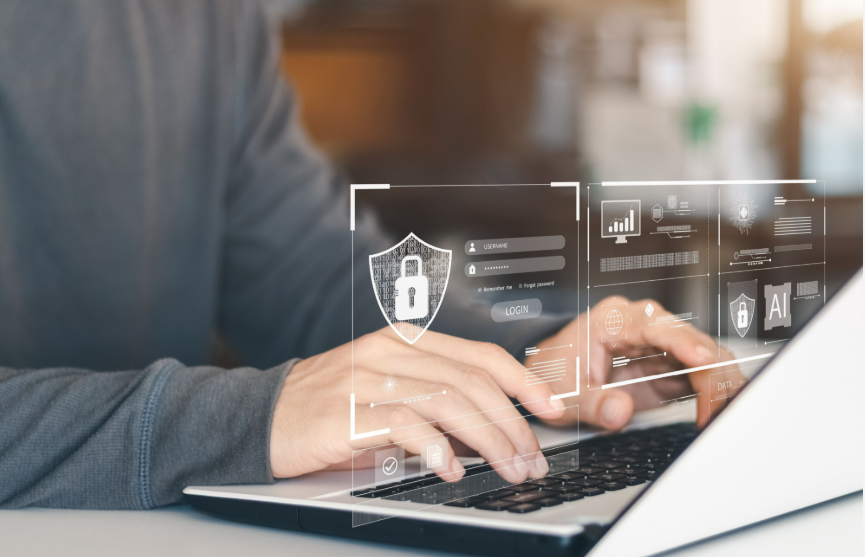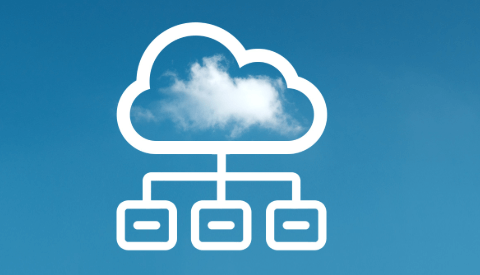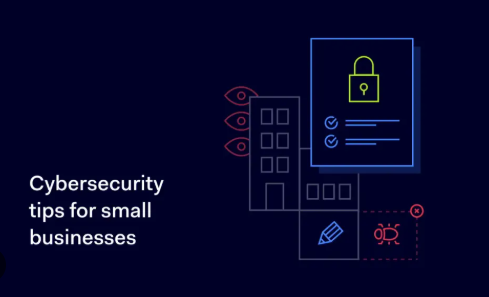In today’s rapidly evolving digital landscape, cybersecurity has become more crucial than ever before. As businesses of all sizes become increasingly reliant on digital platforms, they face a growing number of cyber threats that can jeopardize sensitive data, harm their reputation, and incur significant financial losses. Therefore, it is vital for companies to understand the importance of robust cybersecurity measures and how they can protect themselves against potential attacks.
This article delves into the concept of cybersecurity, explaining why it is critical for businesses and how strong defenses can prevent cyber threats. Whether you’re a small startup or a large corporation, having a comprehensive cybersecurity strategy is not just a luxury, it’s a necessity.
What is Cybersecurity?
Definition and Overview
Cybersecurity refers to the practice of protecting systems, networks, and programs from digital attacks, unauthorized access, and data breaches. These defenses are designed to safeguard sensitive information from malicious cybercriminals and hackers who aim to exploit vulnerabilities in a company’s digital infrastructure.
The field of cybersecurity covers a wide range of practices, including securing software, hardware, networks, and data, to prevent threats such as phishing, ransomware, and other cyberattacks.
See also: The Role of Technology in Modern Healthcare: Innovations and Trends
Types of Cybersecurity Threats
There are numerous types of threats that cybersecurity measures aim to defend against. These include:
- Phishing Attacks – Fraudulent attempts to obtain sensitive information by disguising as a trustworthy entity.
- Ransomware – A type of malware that locks or encrypts a business’s data and demands payment for access.
- Data Breaches – Unauthorized access and theft of sensitive data.
- Denial of Service (DoS) – Attacks designed to overwhelm systems and make them unavailable to legitimate users.
- Malware – Malicious software designed to harm or exploit any device or network.
Why Cybersecurity is Crucial for Businesses
Protecting Sensitive Data
For any business, data is one of the most valuable assets. Whether it’s personal customer information, financial records, or intellectual property, it is essential to protect this data from theft or unauthorized access. Cybersecurity helps prevent data breaches that could compromise sensitive information, leading to financial loss and reputation damage.
Financial Impact of Cyberattacks
Cyberattacks can be incredibly costly for businesses. According to recent statistics, the average cost of a data breach for a company is millions of dollars, including expenses related to recovery, legal fees, fines, and lost business. Smaller companies may struggle to recover from such an event, while larger organizations may see their stock prices and market share suffer.
Maintaining Customer Trust
In the digital era, customers expect businesses to safeguard their personal information. A cyberattack that leads to a data breach or service disruption can erode customer trust and loyalty. A business that prioritizes cybersecurity and has a robust defense system is more likely to attract and retain customers who feel confident in the company’s ability to protect their data.
Compliance with Legal and Regulatory Requirements
Many industries are governed by strict data protection regulations, such as the General Data Protection Regulation (GDPR) in Europe and the Health Insurance Portability and Accountability Act (HIPAA) in the U.S. Failure to comply with these regulations can lead to hefty fines and legal consequences. Having strong cybersecurity measures ensures that your business meets the required compliance standards.
Common Cybersecurity Challenges Faced by Businesses
Lack of Awareness and Training
One of the most significant challenges businesses face when implementing cybersecurity is the lack of awareness and training among employees. Human error, such as clicking on a phishing email or using weak passwords, is often the weak link in a company’s cybersecurity chain. It is essential to regularly educate employees on the latest threats and best practices for maintaining security.
Evolving Cyber Threats
Cybercriminals are constantly adapting and evolving their tactics. As technology advances, so do the techniques used by hackers to breach systems. Businesses must stay vigilant and up-to-date on the latest cybersecurity trends to defend against these ever-changing threats effectively.
Resource Constraints
Small and medium-sized businesses (SMBs) often struggle with limited resources when it comes to investing in cybersecurity. Many SMBs operate on tight budgets and may prioritize other areas of their operations over security. However, the financial risks associated with a cyberattack far outweigh the investment in robust cybersecurity measures.
Key Elements of a Strong Cybersecurity Strategy
1. Network Security
Network security involves the implementation of measures to protect the integrity and confidentiality of a business’s networks. This includes using firewalls, encryption, intrusion detection systems, and securing wireless networks to prevent unauthorized access.
2. Endpoint Security
Endpoint security protects devices such as computers, smartphones, and tablets that are connected to the network. With more employees working remotely, ensuring endpoint security is crucial in preventing breaches.
3. Data Protection
Data protection involves encrypting sensitive information to ensure that it remains secure even if it falls into the wrong hands. Additionally, businesses should implement strict access control measures, ensuring only authorized personnel can access confidential data.
4. Incident Response Plan
An incident response plan outlines the steps a business will take in the event of a cybersecurity incident. This plan should include how to contain the attack, recover data, communicate with stakeholders, and analyze the cause of the breach to prevent future occurrences.
5. Regular Software Updates
Cybercriminals often exploit vulnerabilities in outdated software. Businesses should regularly update their operating systems, applications, and antivirus programs to protect against emerging threats.
6. Employee Training and Awareness
Employees are the first line of defense against cyber threats. Regular training sessions on topics such as identifying phishing attempts, creating strong passwords, and maintaining secure browsing habits can significantly reduce the risk of a successful attack.
Cybersecurity Best Practices for Businesses
Adopt Multi-Factor Authentication (MFA)
MFA adds an extra layer of security by requiring users to provide two or more forms of identification before accessing a system or network. This significantly reduces the risk of unauthorized access.
Implement Strong Password Policies
Encourage employees to use strong, unique passwords for all accounts and change them regularly. A password manager can also be used to securely store passwords.
Backup Data Regularly
Ensure that critical data is regularly backed up and stored in a secure, off-site location. In the event of a ransomware attack or system failure, having backup data ensures minimal downtime and data loss.
Encrypt Sensitive Communications
Encrypting emails and communications that contain sensitive information can prevent unauthorized parties from accessing confidential data during transmission.
The Role of Cybersecurity in Business Continuity
Cybersecurity is not only about protecting against cyberattacks but also about ensuring business continuity. A well-prepared company can quickly recover from an incident, minimizing disruption to operations. By implementing a comprehensive cybersecurity plan, businesses can reduce downtime and maintain customer trust, even in the face of a cyberattack.
How to Build a Cybersecurity Culture in Your Organization
Building a cybersecurity-conscious culture is essential for long-term success. Here’s how businesses can cultivate such a culture:
- Leadership Commitment: Ensure top management prioritizes cybersecurity and allocates the necessary resources for protection.
- Continuous Education: Make cybersecurity training an ongoing process, rather than a one-time event.
- Employee Engagement: Encourage employees to report any suspicious activities and reward them for good security practices.
Conclusion
Cybersecurity is an essential part of any business’s risk management strategy. With the increasing number of cyberattacks, companies must take proactive measures to protect their sensitive data, financial resources, and reputation. By implementing a strong cybersecurity defense system, businesses can significantly reduce the likelihood of successful attacks and ensure long-term success in a digital-first world.
FAQs
1. Why is cybersecurity important for businesses?
Cybersecurity is critical for protecting sensitive data, maintaining customer trust, avoiding financial losses, and complying with legal regulations.
2. How can businesses prevent phishing attacks?
Businesses can prevent phishing by educating employees about recognizing suspicious emails, using spam filters, and implementing multi-factor authentication.
3. What is the most common type of cyberattack?
Phishing attacks are the most common form of cyberattack, where attackers attempt to steal sensitive information by impersonating legitimate sources.
4. How can small businesses improve their cybersecurity?
Small businesses can improve cybersecurity by implementing basic security measures like firewalls, strong passwords, and regular employee training.
5. What is the cost of a cyberattack to a business?
The cost of a cyberattack can be significant, including financial losses from data breaches, recovery costs, legal fees, and damage to a company’s reputation.
6. What should an incident response plan include?
An incident response plan should include steps for detecting and containing an attack, recovering data, notifying stakeholders, and analyzing the breach.




